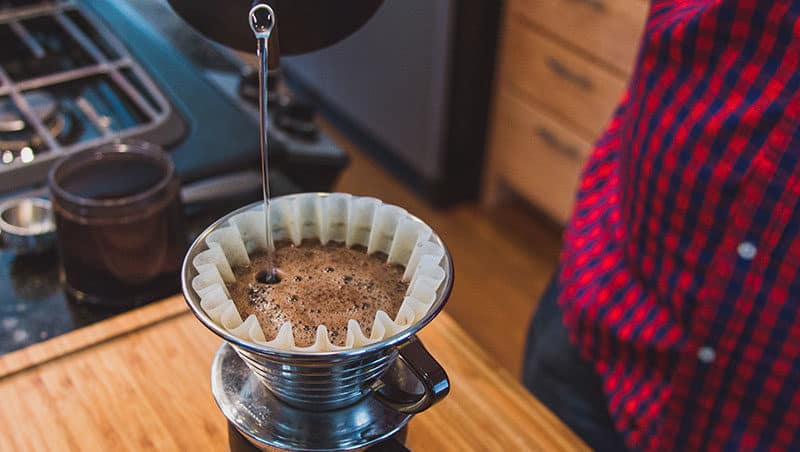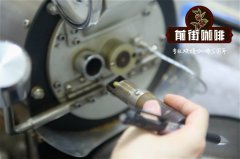What is indigenous coffee in Ethiopia? What is Ethiopian coffee?

Professional coffee knowledge exchange more coffee bean information please follow the coffee workshop (Wechat official account cafe_style)
The spread of coffee shuttles between the northern and southern hemispheres. But in fact, its footprints in its place of origin are also quite tasty. Ethiopia (Ethiopia) is in East Africa. Its territory is divided from southwest to north by the African Rift Valley: the mountains in the west are believed to be the source of coffee; the ancient city of Hara in the east is an early Islamic city-state where coffee is exported to Yemen; the southern highlands are world-famous; and Addis Ababa, the current capital, and Lalibela, the ancient capital of the north, in the center of the country, are linked to century-old coffee rituals and traditions. 1/4 people in Ethiopia (Ethiopia) are directly or indirectly involved in coffee production. Although it is the largest coffee producer in Africa, 40% of it is reserved for domestic sale. Thus it can be seen that coffee is a part of local life.
Kaffa is the cradle of Arabica coffee. Adding up to only a few hundred varieties (congenital or derived) from countries around the world, there are tens of thousands of species in this treasure house, most of which are still unclassified. Heirlooms (original species) is the unique name of Ethiopia (Ethiopia). It seems to tell the world that its varieties are all-inclusive and only need to be summarized in one word. In addition to the ancient species Typica and Geisha, farmers are also named after their own distinctions, such as the "Sidamo species" and the "Yegashev species". Jimma Agricultural Research Center under the Ministry of Agriculture is cultivated under the code name. For example, Ninety Plus's Kemgin coffee comes from the variety codes 74110 and 7487.
Since ancient times, Ethiopian people have been planted, harvested, processed and cooked by hand. In the 1970s and 1980s of industrialization, the country also benefited from misfortune because it promoted socialism and retained small-scale production under the prohibition of the military regime Derg. Until modern times, the planting mode of farmers is also quite primitive. In the western forest areas (Kaffa, Illubabor), they will use local materials to harvest coffee fruits (Forest Coffees) from wild fruit trees. They don't fertilize or cut tree trunks, so their production capacity is very low. In the Semi Forest Farming model, farmers move trees from the forest to farmland and irrigate them with organic manure. The most common Garden farming is family farming, which is planned by the nursery. More than half of farmers also operate in the most common model in Africa.
After harvest, farmers will sell the fruit to nearby treatment plants. However, because Egypt has registered the production areas (Yirgacheffe, Sidamo, Harar), the law stipulates that farmers in the same area can only be sold to the treatment plants in the same area. The price is also regulated by the government. With the exception of a few accredited cooperatives, all coffee is mixed and auctioned by the Commodity Exchange (ECX). For example, the exchange code WSDB coffee, is the first-class and second-class water wash Sidamo. But this shipment is actually a mixture of Aleda, Wondo, Amaro, Dale, Wensho and other nine producing areas in Sidamo province! Under the tide of boutique products that like to "find out the root and ask the bottom", the practice of the authorities is going against the trend.
The word "native species" refers to the ancient varieties of plants that were originally planted to be eaten, while some people define a variety that takes more than 100 years to be called a native species, while others say 50 years. Then some people define varieties that existed before 1945 as native species, about the time when hybrids began to emerge, or 1951, when hybrids became more widespread.
In the coffee industry, you will find that the term native species applies to varieties introduced in South America and Asia more than a hundred years ago, as well as to many coffee varieties in Africa, especially those from Ethiopia.
END
Important Notice :
前街咖啡 FrontStreet Coffee has moved to new addredd:
FrontStreet Coffee Address: 315,Donghua East Road,GuangZhou
Tel:020 38364473
- Prev

The coffee tastes bad because it's not good? You may have misjudged the barista! Bitterness is not necessarily a problem of cooking.
Professional coffee knowledge exchange more coffee bean information Please follow the coffee workshop (Wechat official account cafe_style) I believe that many coffee lovers in exploratory shops have had this experience, getting a cup of coffee that they have been waiting for for a long time, but as a result, it is either too sour or too bitter, or the five flavors are so mixed that they are not delicious at all. Wow! It tastes terrible, even if you keep a polite face.
- Next

At the beginning, the sound of the first explosion was low, indicating the beginning of pyrolysis and the conversion of starch to caramel.
Professional coffee knowledge exchange more coffee bean information please pay attention to the coffee workshop (Wechat official account cafe_style) raw beans refers to coffee, the main ingredients, protein, oligosaccharides, caffeine, chlorogenic acid, amino acids and other chemical changes caused by heat roasting, resulting in coffee beans have a very unique color, bitterness, rustic, sour and texture
Related
- Beginners will see the "Coffee pull flower" guide!
- What is the difference between ice blog purified milk and ordinary milk coffee?
- Why is the Philippines the largest producer of crops in Liberia?
- For coffee extraction, should the fine powder be retained?
- How does extracted espresso fill pressed powder? How much strength does it take to press the powder?
- How to make jasmine cold extract coffee? Is the jasmine + latte good?
- Will this little toy really make the coffee taste better? How does Lily Drip affect coffee extraction?
- Will the action of slapping the filter cup also affect coffee extraction?
- What's the difference between powder-to-water ratio and powder-to-liquid ratio?
- What is the Ethiopian local species? What does it have to do with Heirloom native species?

